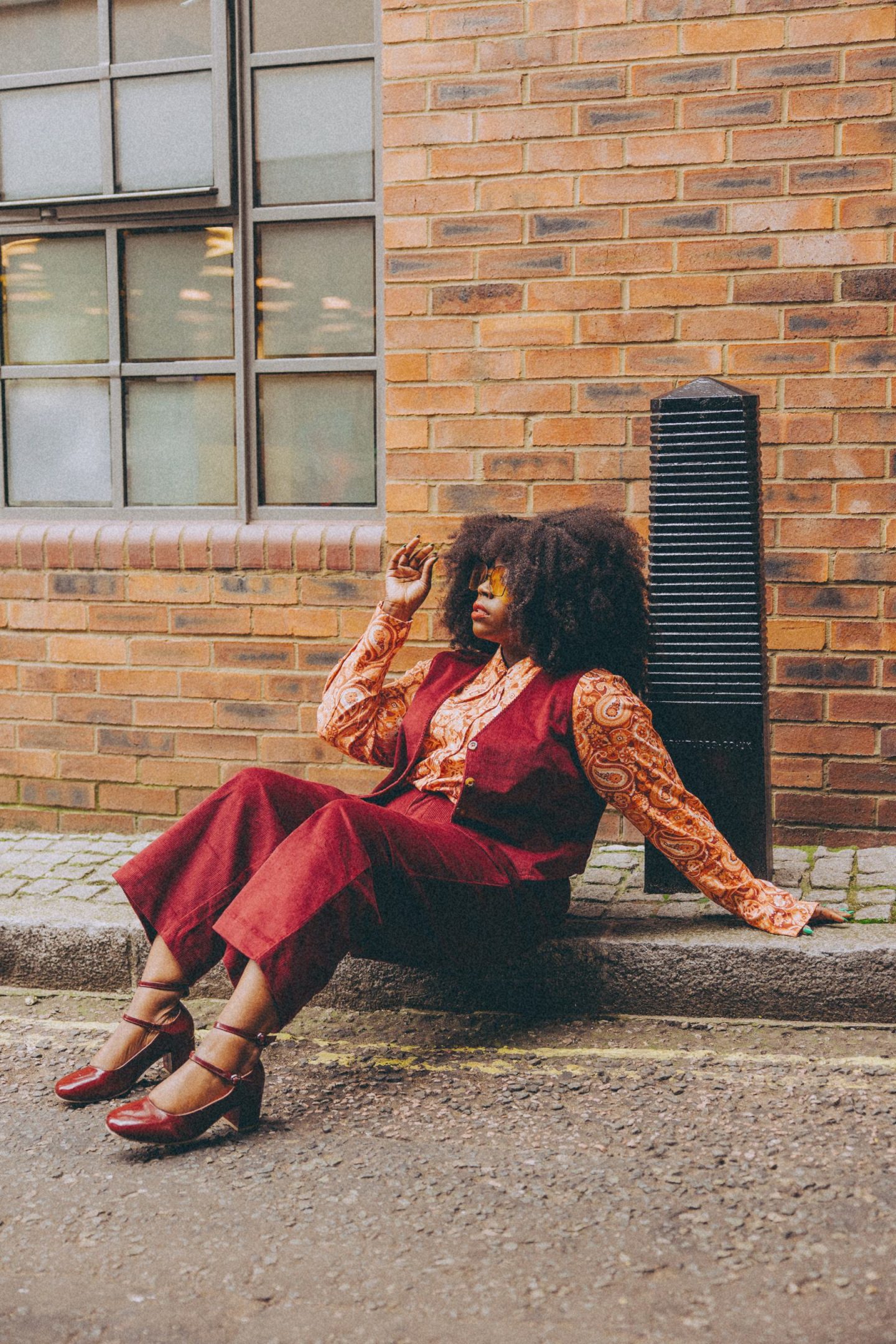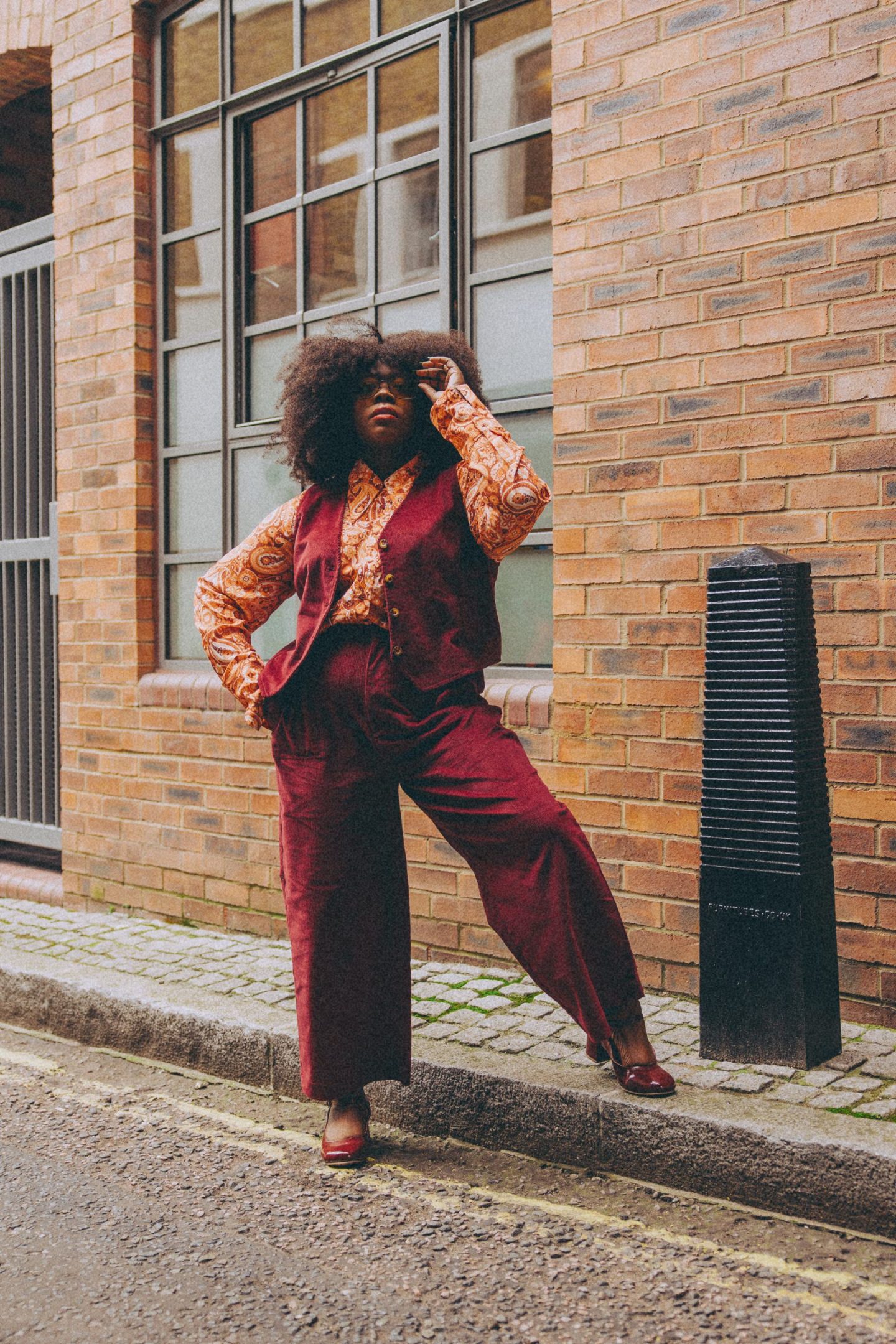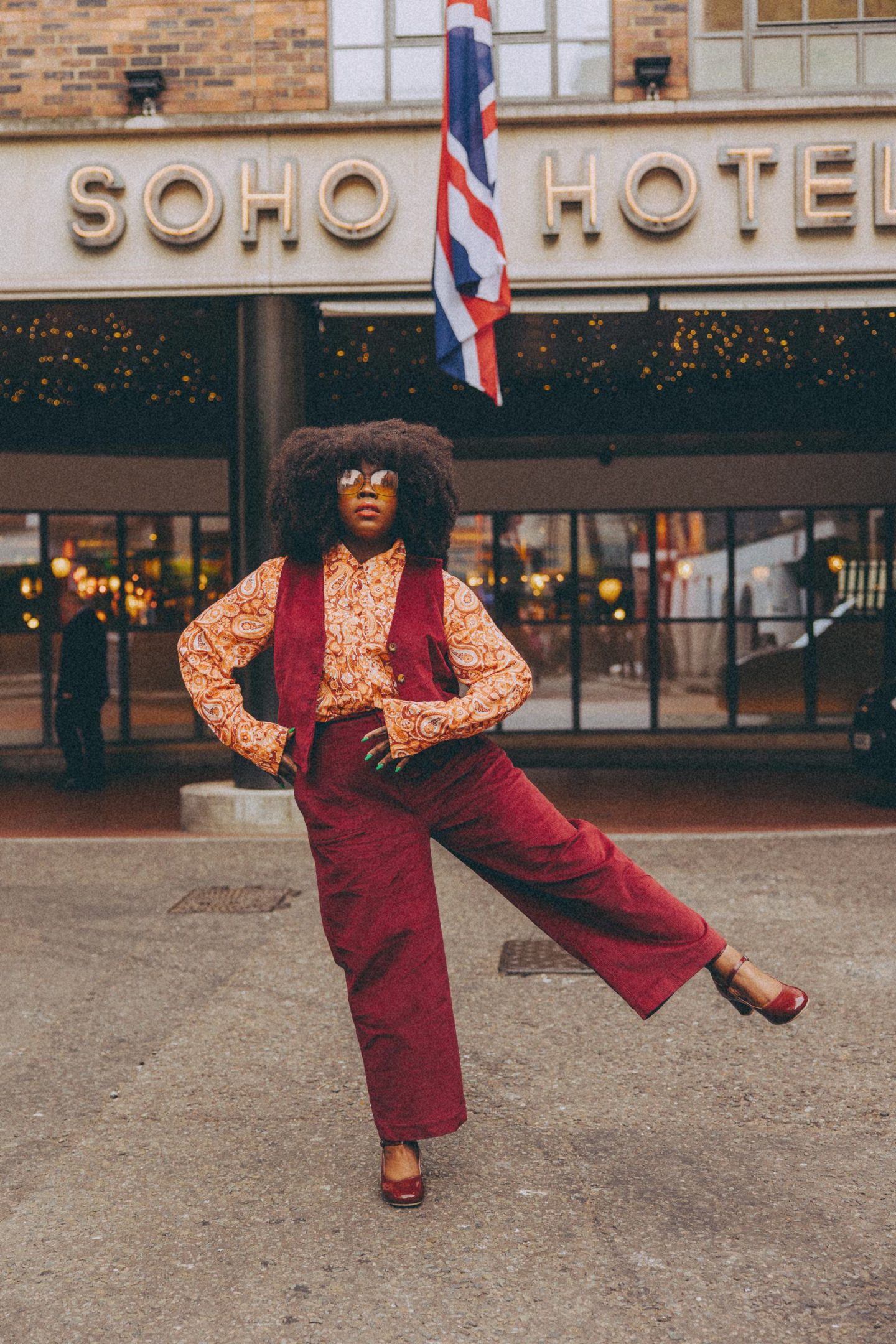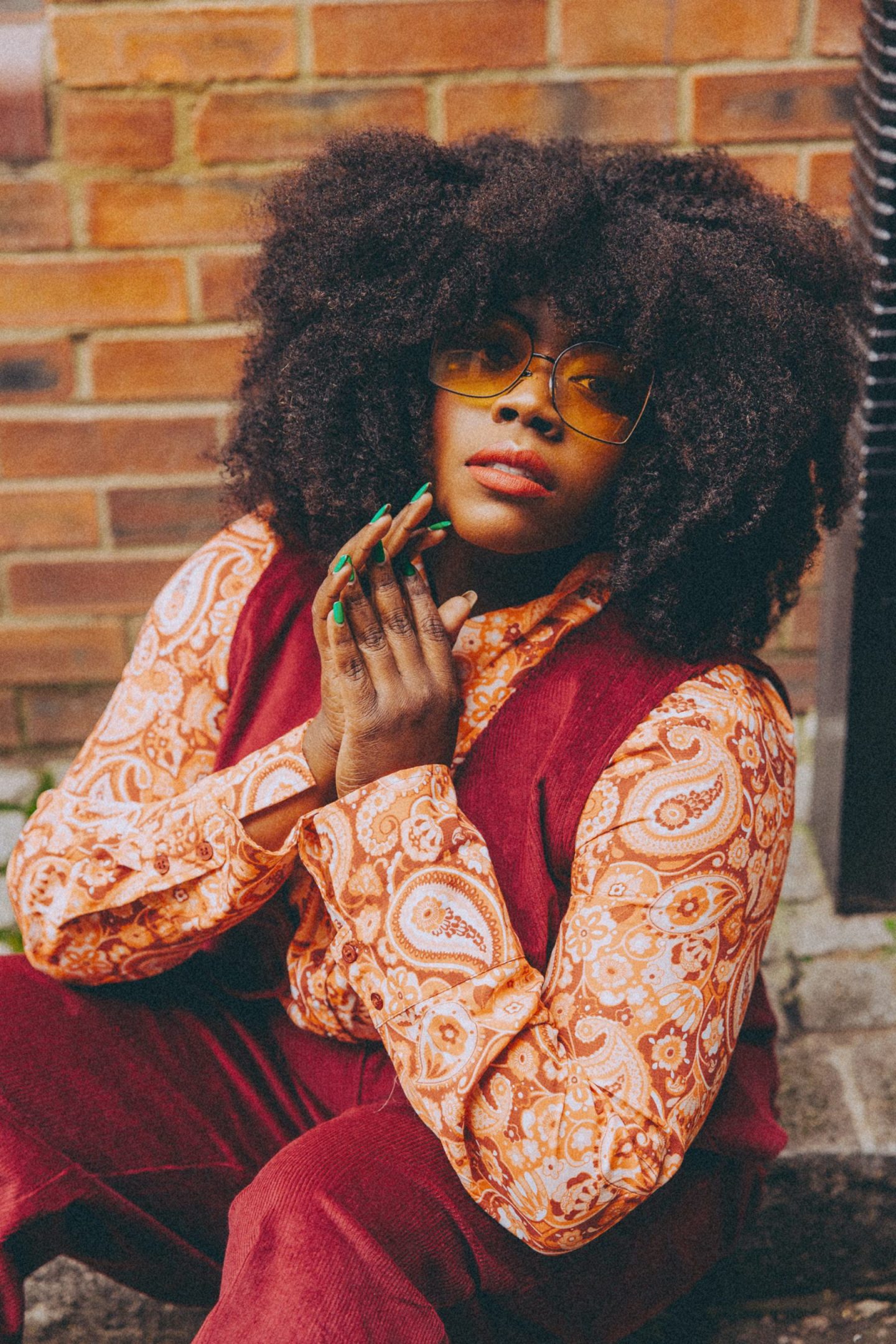

The year was 2014.
Gangnam Style had reached 2 billion views on Youtube, Jay Z ended up being mollywhopped by Solange Knowles, and the Ice Bucket Challenge ruled supreme. It was also the year that fast fashion giant ASOS (previously known as ‘As Seen on Screen) released their greatly anticipated plus size collection, much to the joy of fat babes around the world. For the longest time, plus size fashion in the UK was something that was seen as an afterthought; an irrelevant footnote in the book of trendy fashion. B/A(Before ASOS), a lot of us had to make do with shapeless, unflattering, boring clothes that didn’t truly represent our aesthetic or the stories we wished to tell in order to express our personalities.
Back then, it felt as if brands only saw fat bodies through one lens; a lens that placed us as insecure, boring, low maintenance and gowdy, with no sense of style. As someone who has always had a huge love and appreciation for fashion, it was incredibly infuriating to constantly feel as if I was being put in a box, with no access to show off how I really wanted to dress due to the fatphobic ideologies of brands. After ASOS released their plus size line however, we began to see a surge in other mainstream brands creating plus size lines, and just like that, we became inundated with a plethora of choices and clothing autonomy, of the likes of which we had never seen before. Suddenly, we had access to trend fashion! Crop tops! Oversized suites! Form fitting dresses! Skirts! Sequins! Bikinis!
This brand new chapter coincided nicely with the colossal rise in the body positivity and plus size influencer movement at the time, and it meant that for the first time in a long time, we could shop the same way our thinner counterparts did. By 2016, the plus size fashion market in the UK was worth £6.44 billion pounds, with the figure rising to £9 billion in 2022. It was safe to say that the huge gap and need in the market for trend-led, well fitting pieces that inspired confidence and comfort had been satiated at last. Whilst not quite being equal, we were afforded a slight increase in humanity in this area, and for a while, it felt great.
It was all going so well.
What went wrong?
Well, a huge part of the answer lies in this essay that I wrote last year, explaining the rise of the midsized movement and the co-opting of the body positivity movement. Before I expand my theory, let’s talk about what’s happening with plus size fashion at the moment.
Frankly? It sucks, and there’s no other way to put it. No passion. No energy. No inspiration.
I noticed the significant decline in clothing quality in 2020; with ASOS being one of the main brands who have since taken an almighty fall from grace with regards to their plus line. I gave the brands the benefit of the doubt. COVID19 led to changes in consumer behaviour, thus resulting in less spending, so I decided to wait it out. We are now in 2024, and nothing has changed. Not only are we not seeing any changes in the types of clothing being made, but brands are closing their plus size sections in-store, and it seems as if we are regressing when it comes to aesthetic, style and fit.
Brands like Simply Be – who used to champion plus sized clothing – face complaints from customers who critique the ill-fitting pieces that fit on the small size. ASOS stock designs that are frumpy, neutral, uninspiring and boring. Even independent brands like Selkie (who’s clothes used to fit true to size) have now sized down in their fitting, meaning that if you are plus sized, you have to size up by at least two sizes.


The fat fashion landscape has turned dramatically, and there could be a couple of reasons for this.
- Ozempic, and the return of skinny girl trend in pop culture. Move over Kim Kardashian, Nicki Minaj, and the other manufactured curvy bodies that inspired the hourglass/BBL trend; your time is now over. Unfortunately, for as much as we within the body image movements can campaign and hold discourse over the acceptance of all bodies, living in the West means that we will always live under the Westernised standard of beauty and so as much as we have a rotation of different body trends (With some that can last years), it will always come back to the most dominant; thinness. We’ve seen the rise in celebrities promoting weight loss injections such as Ozempic and WeGovy (Kelly Osbourne and Oprah, anyone?) and with these weight loss drugs now being made more financially acceptable to the masses, we will begin to see a shift in people trying to lose as much weight as possible to fit into what they think society wants to them to look like.
- Rise of mid-sized fashion influencers and the decrease of plus size-activists AND fashion influencers. The increase in mid-sized influencers may be leading brands to believe that there may be no need to extend clothing lines beyond a size 18 anymore. There has also been a slight decrease in plus size fashion creators, which could be for a myriad of reasons. Some may wish to expand into other sectors such as lifestyle, beauty or travel. Some may grow irritated and frustrated over the lack of inclusion and representation and have quit altogether. Some have lost a dramatic amount of weight and now no longer wish to speak for, or uplift the plus size community. Whatever the case may be, we can’t deny that it has been a little quiet over the last couple of years.
- The lack of diversity behind the scenes. If there is no size inclusivity when it comes to those who have a seat at the table, then it will always be hard to gain true diversity when it comes to the output. Directors, photographers, casting directors, PR executives, marketeers, buyers, merchandisers, designers, CEOs should come in a range of shapes and sizes. Brands have the power to dictate what the public sees. They have the power to shape ideologies. If you have a room full of slim members of staff who are trying to create a plus size collection, it will fail if you are unable to gain insight from those who live in fat bodies. Who know how they want pieces to fit, who know what we actually want to wear.
At the end of the day, we are tired of being dictated to. We are tired of having limited choices. We are tired of being told about a plus size collection that will never see the light of day. We are tired of being sold lies. We are tired of having to miss out on cute pieces due to the lack of size inclusivity. We are tired of constantly being seen as an afterthought. We are tired of not being seen.
Where do we go from here?
It’s a tricky one, but I believe that as long as we keep the discourse going, we can hopefully get fat fashion back to where it used to be. Felicity Hayward has also been brilliant at calling out brands, meeting with brands and the general state of plus size fashion, and the more people we can get to have this discourse (as well as our mid-size and thinner allies), the more our voices can be heard. There are a plethora of websites that list some great plus size friendly brands (I also created one too here!) for us to champion too, but ultimately it is the brand’s responsibility to listen to its audience and try and make changes were necessary. Hire plus size designers who actually know what fat people want to wear. Hire plus size PR executives who can execute inclusive marketing campaigns that are representative of all types of bodies. Collaborate with plus size influencers on clothing collections. Hire consultants to help guide your plus size strategy.
Ultimately, the industry need to get it together. Larger bodies deserve to feel great in clothing too and deserve to have the representation. No more excuses.
March 8, 2024
Steph
What the HELL Is Going on With Fat Fashion?
